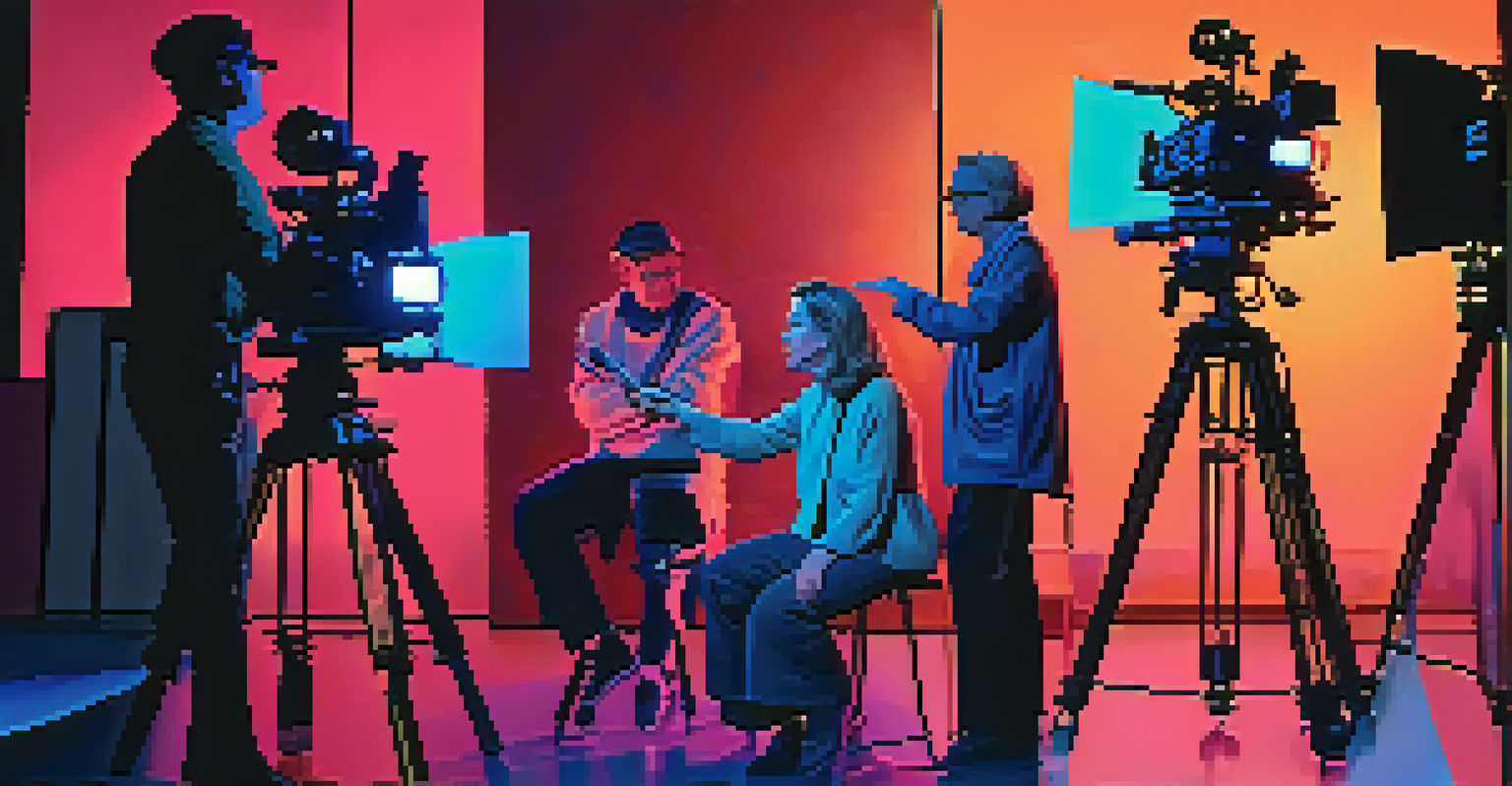From Page to Screen: Adapting Screenplays into Films

Understanding the Adaptation Process: The Basics
Adapting a screenplay into a film is both an art and a science. At its core, this process involves translating written words into visual storytelling, which requires a deep understanding of both mediums. Screenwriters must consider what elements of the story can be effectively portrayed on screen, often making tough decisions about what to include or exclude.
Adapting a novel to film is like translating a poem into a symphony; the essence remains, but the form changes dramatically.
For example, a novel may have rich internal monologues that are difficult to translate visually. This means that screenwriters often need to find creative ways to express characters' thoughts and feelings through dialogue, visuals, or even music. The goal is to maintain the essence of the original story while making it suitable for a different audience and medium.
Ultimately, the adaptation process is about finding the right balance between fidelity to the source material and the demands of cinematic storytelling. This balance can lead to exciting new interpretations that resonate with both fans of the original work and new viewers alike.
Choosing the Right Source Material for Adaptation
The first step in the adaptation process is selecting the right source material. Not every book or play makes for a great film; some narratives simply don't translate well to the screen. Screenwriters often look for stories with strong characters, visual imagery, and compelling plots that can be effectively paced within a two-hour runtime.

For instance, adaptations of graphic novels often succeed because they inherently possess visual elements that can easily be translated to film. On the other hand, more abstract or philosophical texts may pose challenges, requiring significant reimagining to engage audiences visually. The key is to find stories that not only have potential but also offer a unique perspective that can captivate filmgoers.
Art and Science of Adaptation
Adapting a screenplay requires balancing fidelity to the original work with the demands of visual storytelling.
This careful selection process is crucial, as it sets the foundation for the entire project. A well-chosen source material can lead to a successful film that resonates with audiences, while a poor choice can result in a disjointed or uninspired adaptation.
The Role of Screenwriters in Adaptation
Screenwriters play a pivotal role in adapting works into films. They are the storytellers responsible for reinterpreting the original material while ensuring the emotional core remains intact. This involves not only reworking dialogue and scenes but also reimagining how the narrative unfolds in a visual medium.
The art of cinema is to create a visual language that transcends the written word.
A skilled screenwriter can take a 300-page novel and distill its essence into a concise script that still captures the spirit of the original. This often requires making tough decisions about which characters or subplots to keep, alter, or eliminate entirely in order to streamline the story for the screen. It’s a complex task that demands creativity and flexibility.
Moreover, collaboration with directors and producers is essential to align the screenplay with the overall vision for the film. This teamwork ensures that the adaptation is not just a faithful retelling but also a fresh interpretation that engages viewers and enhances the original narrative.
Challenges of Staying True to the Original Work
One of the biggest challenges in adapting screenplays is balancing fidelity to the original work with the demands of cinematic storytelling. Readers often have their own interpretations and emotional connections to a story, which can lead to high expectations when it comes to its adaptation. As a result, screenwriters must navigate these expectations carefully.
For example, when adapting a beloved novel, any changes made to the plot or characters can evoke strong reactions from fans. This pressure can lead to heated debates about the 'correct' way to portray certain elements, making it crucial for screenwriters to justify their choices. The goal is to honor the original story while also making it relevant and engaging for a new audience.
Choosing Effective Source Material
Selecting the right source material is crucial, as stories with strong characters and visual elements often translate better to film.
Ultimately, the challenge lies in finding a balance between innovation and respect for the source material. While it’s important to stay true to the original work, successful adaptations often bring new insights and perspectives that enrich the story.
The Importance of Visual Storytelling in Film Adaptations
Visual storytelling is at the heart of successful film adaptations. Unlike novels, which rely on descriptive language to convey emotions and settings, films must show rather than tell. This means that screenwriters and directors must think critically about how to translate narrative elements into visual cues that resonate with audiences.
For instance, a character's internal struggle might be depicted through facial expressions, cinematography, and sound design rather than through lengthy dialogue. This shift in storytelling technique can create a more immersive experience for viewers, allowing them to connect with the characters on a deeper level. The use of imagery can evoke emotions and themes in ways that words sometimes cannot.
By focusing on visual storytelling, filmmakers can create a dynamic adaptation that captivates the audience. This approach not only enhances the viewing experience but also respects the original material by finding innovative ways to express its core themes.
The Collaborative Nature of Film Production
Film production is inherently collaborative, with various creative minds coming together to bring a screenplay to life. From directors to cinematographers, each contributor plays a vital role in shaping the final product. This collaboration often leads to new ideas and interpretations that enrich the adaptation process.
For example, a director's vision can transform a screenplay by emphasizing certain themes or character arcs that may not have been fully explored in the original material. Likewise, actors bring their own interpretations to their roles, adding depth and authenticity that can enhance the story. This synergy can lead to a film that feels both fresh and faithful to its source.
Collaboration Enhances Adaptations
Film production thrives on collaboration, allowing various creative minds to contribute unique perspectives that enrich the final adaptation.
However, collaboration can also present challenges, as differing opinions may arise during production. Navigating these differences requires open communication and a shared commitment to the project's vision, ensuring that everyone is on the same page as they work towards a common goal.
Audience Reception and Critical Response to Adaptations
The success of a film adaptation often hinges on audience reception and critical response. Viewers come to films with their own expectations, influenced by their familiarity with the original material. As such, filmmakers must be prepared for varying opinions, which can range from enthusiastic praise to sharp criticism.
For instance, adaptations that stay true to the source material may please die-hard fans but risk alienating new viewers who might not understand the nuances. Conversely, a more creative interpretation might attract a broader audience but upset purists who feel the essence of the original has been lost. Striking this balance is crucial for achieving both critical and commercial success.

Ultimately, audience reception can shape the legacy of an adaptation. Successful films often spark conversations and debates among fans, further enriching the cultural significance of both the original work and its cinematic counterpart.